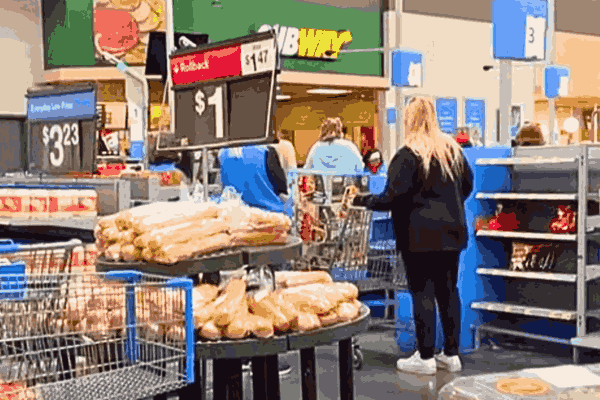CHANGE THAT FOLLOWED FROM MEXICO
Walmart is revolutionizing its in-store experience by phasing out Walmart self-checkout lanes at Supercenters in St. Louis, Missouri, and Cleveland, Ohio.
This strategic move, following a similar initiative in New Mexico last year, is geared towards elevating Customer Service and Satisfaction.
Responding to Local Trends and Customer Input
The ongoing transition at the Cleveland Steelyard location and a St. Louis-area Supercenter is set to conclude within two weeks.
Walmart spokesperson Brian Little attributes this change directly to feedback from customers, employees, and local shopping behaviors.
“We anticipate this change will enhance the in-store shopping experience and empower our associates to deliver more personalized and efficient service,” shared Little.
Strategic Pivot: Introducing Traditional Checkout Options
Walmart‘s decision to bid farewell to self-checkout lanes is part of a larger strategy to reimagine its self-checkout model.
The focus is on introducing more traditional checkout alternatives, aligning with recent trends in the grocery retail sector.
Empowering Store Managers for Local Decision-Making
Kelsey Bohl, senior manager of corporate communications at Walmart, emphasizes that individual store managers have the authority to decide on lane closures or adjustments based on the unique store requirements and customer preferences.
Enhanced Convenience for Walmart+ Members and Spark Delivery Drivers
Customers have observed that self-checkout lanes are now exclusively accessible to Walmart+ subscribers or Spark delivery drivers during specific times, ensuring swift access and deliveries.
Retail Industry Shift Towards Self-Checkout Revamp
Walmart‘s strategic shift mirrors a broader industry trend, with major retailers reassessing their self-checkout strategies.
Target, for instance, has rolled out Express Self-Checkout lanes at most of its nearly 2,000 stores nationwide, limited to 10 items or fewer, streamlining the checkout process.
Customer-Centric Focus: Elevating the Checkout Experience
Target‘s trial of Express Self-Checkout with a 10-item cap at approximately 200 stores demonstrated that self-checkout was twice as speedy, enhancing the overall checkout experience for customers.
The flexibility to choose between self-checkout for quick visits or a staffed lane for larger purchases resonated well with customers.
Adapting to Customer Flow and Staffing Needs
Bohl stresses that store managers are empowered to make decisions based on customer flow and staffing levels, ensuring a tailored approach to meet each store’s unique requirements.
Industry-Wide Trend: Rethinking Self-Checkout
Other retailers, such as Dollar General and Schnuck Markets, are also recalibrating their self-checkout strategies, reflecting a broader shift in the retail landscape towards enhancing customer convenience and satisfaction.
Also Read About Food Safety Alert for the Ground Beef Batch from Omaha Packing




